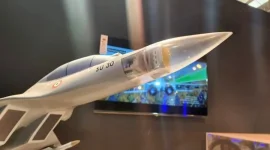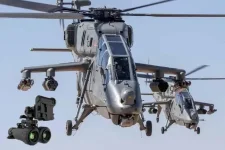- Views: 3K
- Replies: 23
The Indian Air Force (IAF) is set to significantly upgrade the combat potential of its Rafale fighter jets by replacing their current French-made MICA air-to-air missiles with domestically developed Astra Mk1 and Mk2 missiles.
This strategic decision aims to boost the IAF's aerial capabilities while reducing reliance on foreign suppliers, aligning with India's goals for self-sufficiency in defence technology.
The 36 Rafale aircraft procured from France's Dassault Aviation in a deal signed in 2016, currently use the MICA missile system, manufactured by the European company MBDA, as their primary weapon for engagements beyond visual range. The MICA system includes both infrared (IR) and radio frequency (RF) guided variants.
While considered effective in the past, the MICA's operational range of approximately 80 kilometres is increasingly viewed as insufficient for modern air combat scenarios, which often demand engagements at much longer distances.
Concerns about the MICA's range have grown, particularly in light of advanced long-range missiles, such as China's PL-15 (reported to have ranges over 200 km), being fielded by potential adversaries. This evolving threat landscape necessitates equipping the Rafale fleet with missiles capable of engaging targets further away and possessing stronger electronic counter-countermeasures (ECCM) to resist jamming.
Furthermore, the considerable expense involved in maintaining and upgrading imported missile systems has encouraged the IAF to favour indigenous alternatives offering comparable or enhanced performance more economically.
India's answer comes in the form of the Astra missile family, developed by the Defence Research and Development Organisation (DRDO) and produced by Bharat Dynamics Limited (BDL).
The Astra Mk1 Beyond Visual Range Air-to-Air Missile (BVRAAM) is already operational on other IAF platforms like the Sukhoi Su-30 MKI and the LCA Tejas. With a proven range between 90 and 110 kilometres, the Astra Mk1 surpasses the MICA. It features advanced technologies including an active radar seeker for precision targeting and smokeless propulsion.
Integration of the Astra Mk1 onto the Rafale jets has been approved, with Dassault Aviation responsible for the necessary software and system modifications.
Looking ahead, the DRDO is advancing the development of the Astra Mk2. This next-generation missile is projected to have an impressive range of 130 to 160 kilometres, positioning it alongside sophisticated international BVRAAMs like the American AIM-120D and potentially the Chinese PL-15E. The Astra Mk2 will incorporate improvements such as a dual-pulse rocket motor for better speed and manoeuvrability in the final phase of flight.
The IAF anticipates integrating the Astra Mk2 onto the Rafale fleet following the completion of its development and testing phases, which are expected around 2026-2027.
While MBDA has proposed its newer MICA-NG (Next Generation) missile, offering an extended range of 120-150 km, reports suggest the IAF is less inclined towards this option.
The primary reason cited is the significantly higher cost associated with the MICA-NG compared to the indigenous Astra Mk2, which is expected to provide similar capabilities at a much lower price, making it a more practical choice for widespread deployment across the IAF's fighter squadrons.
This shift underscores India's growing confidence in its domestic defence industry and its commitment to achieving self-reliance in critical military technologies.



